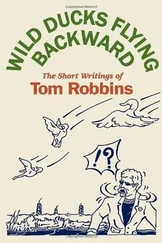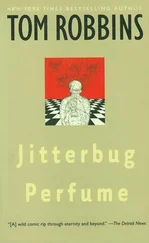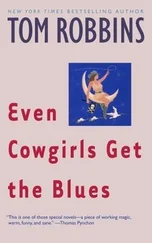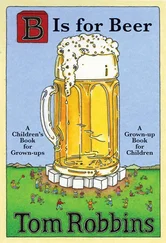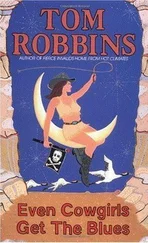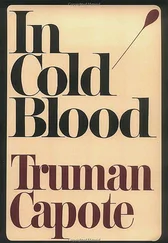The editing was attentive, it was scrupulous, yet ultimately featherlight, changes and corrections minimal at best. I was surprised. A notoriously slow writer, a writer in love with language and ideas, I was confident my prose was well wrought, yet it was also colored by a “crazy wisdom,” wabi-sabi, playful yet deadly serious approach not exactly commonplace in Western literature, and I wasn’t sure how this would fly with an old-school pro such as Solotaroff. At one point early in the unexpectedly painless process, Ted paused and told me the following story:
Jim Thorpe, who would go on to become by consensus the greatest athlete of all time, was in 1911 a student at tiny Carlisle Indian Institute in Pennsylvania. This was at a time when Harvard was a national football powerhouse, so fans chuckled when charitable Harvard deigned to go down to Carlisle and engage the poor boarding school Indians on the gridiron. Harvard’s team featured an all-American linebacker known for his strength, vision, and unusual lateral quickness, and regarded as the best player in the country. On Carlisle’s first play, Thorpe, unable to outmaneuver the linebacker, was tackled barely beyond the line of scrimmage. The same thing occurred on the next play. On third down, Thorpe called his number again. This time, instead of trying to run past Harvard’s star, the Indian from the hills of Oklahoma ran directly at him, knocked him down, ran over him, and raced eighty yards for a touchdown. Then he circled, ran back up the field at full speed, picked up the linebacker (who still lay on the ground), held him in the air, shook him hard, and said politely but emphatically, “Let Jim run.”
Ted allowed this to soak in for a moment. Then he said, “It didn’t take me long to conclude that that was the only sensible approach to editing this book of yours. No editor can hope to impose his will on a performance like this one. We’ve got to let Tom run.”
At the time, Bantam Books was a mass-market paperback publisher, buying, at auction, reprint rights to successful hardcover books and reissuing them in inexpensive, small-format, paperback editions. However, Solotaroff and some confederates were scheming to change that business model, and their maneuver began with Even Cowgirls Get the Blues . After first buying Cowgirls, Bantam then sought to auction off the hardcover rights. This constituted a major turning of the tables, a significant reversal of tradition, and the move met with considerable resistance in the publishing world. Bantam’s ploy, the first of its kind in the history of New York publishing, was almost universally scorned. Almost. Eventually, one brave soul at Houghton Mifflin, the venerable Boston house, thumbed a patrician nose at custom, purchasing rights from Bantam in a precedent-shattering deal, and in 1976 introduced simultaneous hardcover and trade paper editions of Cowgirls. (Bantam would issue the mass-market paperback a year later.)
By no means an out-of-the-gate galloping success, Even Cowgirls Get the Blues did all right for itself. The New York Times compared it favorably to Thomas Pynchon, Pynchon himself wrote that it dazzled his brain, calling it “a piece of working magic,” and me “a world-class storyteller.” The Bantam paperback, when it appeared in ’77, did attract a large following, almost entirely via word of mouth, and Cowgirls remains my best-known (though not best-executed) novel, doubtlessly because it was filmed (in 1993) and movies, deserving or not, are perceived as sexier than books.
Particularly admired by women, Cowgirls was for years the only novel by a male author to be sold in some feminist bookstores. A philosophy professor from Wright State University delivered a paper at a conference in which she claimed that Cowgirls represented the first work in history in which a female protagonist undertook the classic hero’s journey, passing through all of the stages as outlined by Joseph Campbell in his monumental study, The Hero With a Thousand Faces . While I was flattered by the reference to Campbell and world mythology, I must confess that the feminist thrust of Cowgirls had simpler origins.
In Appalachia in the thirties, we kids — free from the intrusion of wholesale technological entertainment — amused and grew ourselves with improvised role-playing games, usually of an adventurous nature. Our backyard exercises in make-believe were varied in content, and while dominated by masculine examples, were seldom gender-specific. My beloved cousins Martha and June could assume the persona of a cowboy, an Indian, a pirate, a pilot, a cop, a robber, or a soldier as readily as Johnny or Georgie or I. It wasn’t until many years later that it occurred to me that while any of us boys could actually, theoretically, grow up to be a soldier, an explorer, a cowhand, or a detective, those opportunities, particularly in the South at that time, were simply out of the question for Martha and June. Their aspirations, exposed to the harsh beam of reality, would have been both more limited and more tame.
Thus it was in sympathetic retaliation that I peopled my second book — a language-driven seriocomic novel that raised the flag of physical, psychological, sexual, and spiritual freedom — not only with a female hitchhiker whose exploits on the road surpassed those of Jack Kerouac and pals, but with young women who, determined to finally realize their cowgirl fantasies, take over a ranch by force. This action costs one of them, their leader, her life — but one should never operate under the illusion that one can always live out one’s wildest fantasies with impunity. One must be willing to be charged a high price.
Yesterday, while examining for the first time in many years, a first edition of Cowgirls, I came across excerpts from reviews of its predecessor, Another Roadside Attraction, evaluations in which I as a writer was likened to Mark Twain (by the Los Angeles Times ), James Joyce ( Rolling Stone ), and Nabokov and Borges ( Playboy ). Apparently, the book garnered its share of raves after all. How like an unevolved Cancerian to hold on to his negative notices and forget that there were others that many authors might have killed for.
Since publication of Cowgirls, it has been my policy never to read reviews, though people do voluntarily quote them to me, some out of shared pride in my perceived success, others out of malicious glee in what they regard as a well-deserved public scourging. I can’t say for certain if my no-read policy has been wise or foolish: who knows what good advice I may have missed? On the other hand, it has shielded me from unnecessary distractions (God knows there is a sufficiency of those already), while the elixir of understanding that every ego, however philosophically downsized, enjoys and at times even craves, is usually supplied — occasionally by the bucketful — from other sources.
For example, not long after the publication of my third novel, I received a letter from a young woman, a stranger, that read in part, “Your books make me laugh, they make me think, they make me horny, and they make me aware of all the wonder in the world.” I’ve never forgotten that testimonial because she smacked the nail on the head with a titanium hammer: though I’m oblivious to it during the act of writing, those are precisely the responses I might wish my books to arouse. And is there a higher accomplishment for any novel, any poem, than to awaken some reader’s sense of wonder? Probably not.
My most cherished accolade from that period, however, had nothing to do with matters literary, except perhaps in the most indirect way. Terrie and I had split not many months after Fleetwood’s birth, our brief marriage another casualty of the turbulent sixties and its libertine mores, but we’d remained close and were sharing, in separate domiciles, the rearing of our son. One day when Fleetwood was three, Terrie took him shopping with her in a nearby town, La Conner being blissfully bereft of malls, corporate outlets, and franchise stores of any category. There, she fell into conversation with a fellow shopper, an older woman who at one point turned to Fleet and asked, “And what does your daddy do, little boy?”
Читать дальше

